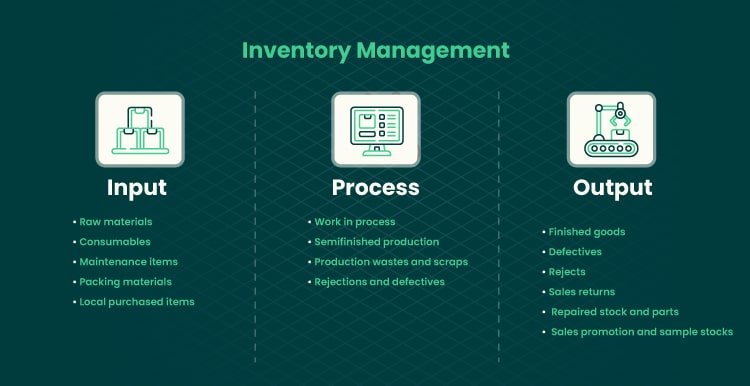Managing inventory is one of the most important responsibilities for manufacturers, distributors, retailers, and eCommerce companies. When businesses rely on manual work, spreadsheets, and unorganized communication, they often struggle with stock issues, delays, and higher operational costs. This is why many organizations are now using modern inventory management solutions to improve stock accuracy, automate approvals, and speed up order processing. At the same time, it is equally important to follow the right steps of effective workflow automation so that automation brings real business value and long-term efficiency.
In this article, we explain how workflow automation supports better inventory control, what benefits businesses gain from it, and the steps you can follow to build a successful automation strategy.
Contents
Why Workflow Automation Matters in Inventory Management
Inventory management involves multiple tasks – stock requests, tracking product movement, supplier management, purchase approvals, goods receipt, and reconciliation. If these activities are handled manually, businesses may face:
- Overstocks or stockouts
- Delayed purchase approvals
- Errors in inventory counts
- Poor forecasting
- Lost or misplaced records
Workflow automation helps businesses avoid these challenges. When processes are automated, every request, approval, and stock update is recorded and tracked in a central system. Teams spend less time chasing information and more time serving customers.
Key Benefits of Workflow Automation for Inventory
Implementing workflow automation in inventory operations provides the following benefits:
✔ Better Visibility and Real-Time Tracking
Automation provides a live view of stock levels and inventory movement. Decision-makers can understand what is available, what needs replenishment, and when.
✔ Faster Purchase and Reorder Approvals
Automated approval workflows eliminate follow-ups through emails and phone calls. Requests move quickly to the right managers.
✔ Improved Accuracy and Fewer Errors
Automation reduces manual data entry and ensures consistent, error-free records.
✔ Lower Operational Costs
With optimized stock levels and timely purchases, businesses avoid excess storage costs and emergency procurement.
✔ Stronger Supplier Management
Automated reminders, vendor communication, and performance tracking improve the supplier relationship and ensure timely deliveries.
Steps to Build an Effective Workflow Automation Strategy for Inventory Management
To achieve the best results, businesses must follow a structured approach to workflow automation. Below are the essential steps:
Step 1: Identify Inventory Processes That Need Automation
Start by listing all inventory processes, such as:
- Stock request and issue
- Purchase order creation
- Goods receipt and inspection
- Supplier onboarding and evaluation
- Inventory counting and reconciliation
Choose the most repetitive, time-consuming, and error-prone processes as your first priority for automation.
Step 2: Define Roles and Responsibilities
To ensure clarity, identity who will perform what:
- Requester (department or store manager)
- Approver (procurement manager or operations head)
- Inventory controller
- Supplier or vendor
- Finance team for invoice matching
Mapped roles reduce confusion and ensure smooth execution.
Step 3: Standardize Forms and Data Fields
To avoid mismatched details, define clear forms for:
- Stock request forms
- Purchase order forms
- Delivery and inspection forms
Standardized data fields lead to clean and accurate records.
Step 4: Choose the Right Automation Platform
The workflow platform you select should support:
- Visual workflow builder
- Integration with ERP or accounting tools
- Automated alerts and notifications
- Approval routing
- Vendor and purchase tracking
- Reporting and dashboards
No-code platforms like Cflow make it easy for any business to create workflows without technical skills.
Step 5: Test and Improve the Automated Workflow
Before full implementation, test the automated process with a small team. Collect feedback, adjust steps, and remove any bottlenecks. Continuous improvement ensures long-term success.
Examples of Inventory Workflows You Can Automate
Businesses can automate many inventory processes, including:
| Inventory Activity | Automated Outcome |
| Purchase Request | Faster approvals, accurate requirements |
| Supplier Onboarding | Standardized checks and documentation |
| Stock Reorder | Automatic reorder alerts and tracking |
| Goods Receipt & Inspection | Validated delivery check against purchase order |
| Invoice Matching | Faster payment without manual comparison |
How Cflow Helps Automate Inventory Workflows
Cflow is a no-code workflow automation platform that helps businesses manage inventory operations more efficiently. With Cflow, you can:
- Track stock levels and request approvals in one place
- Automate procurement and vendor processes
- Maintain accurate, real-time inventory data
- Integrate with accounting, ERP, or eCommerce tools
- Generate reports for better planning and forecasting
Cflow’s visual builder allows teams to automate workflows without writing code, making it easy for operations, procurement, and warehouse teams to adopt automation.
Conclusion
Modern businesses cannot afford slow, manual, and error-prone inventory processes. By using the right inventory management solutions and following the steps of effective workflow automation, organizations can reduce costs, improve stock visibility, and strengthen supplier relationships. Automation is not just a technology upgrade it is a strategic advantage that helps businesses operate with confidence and scale faster.
If your business is ready to automate inventory workflows, improve accuracy, and speed up procurement, it may be the right time to explore Cflow and transform the way you manage inventory.
